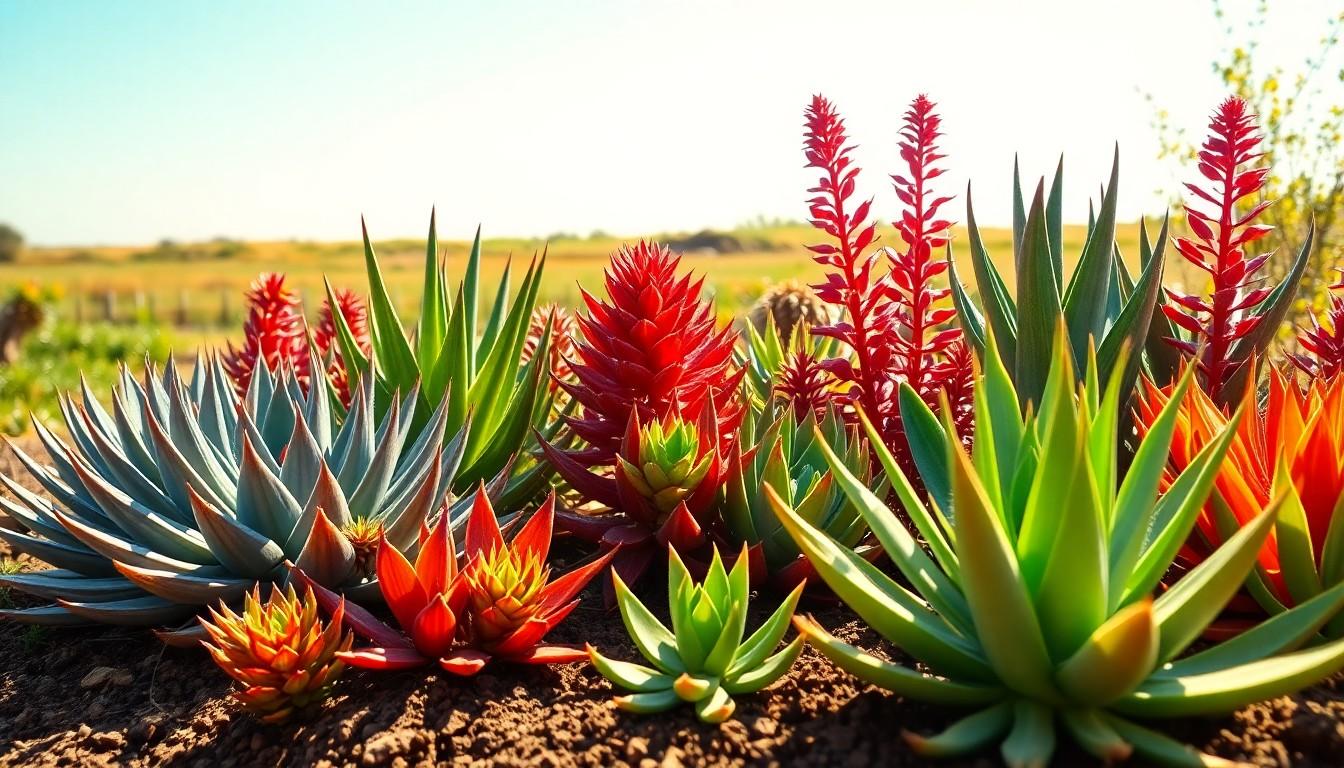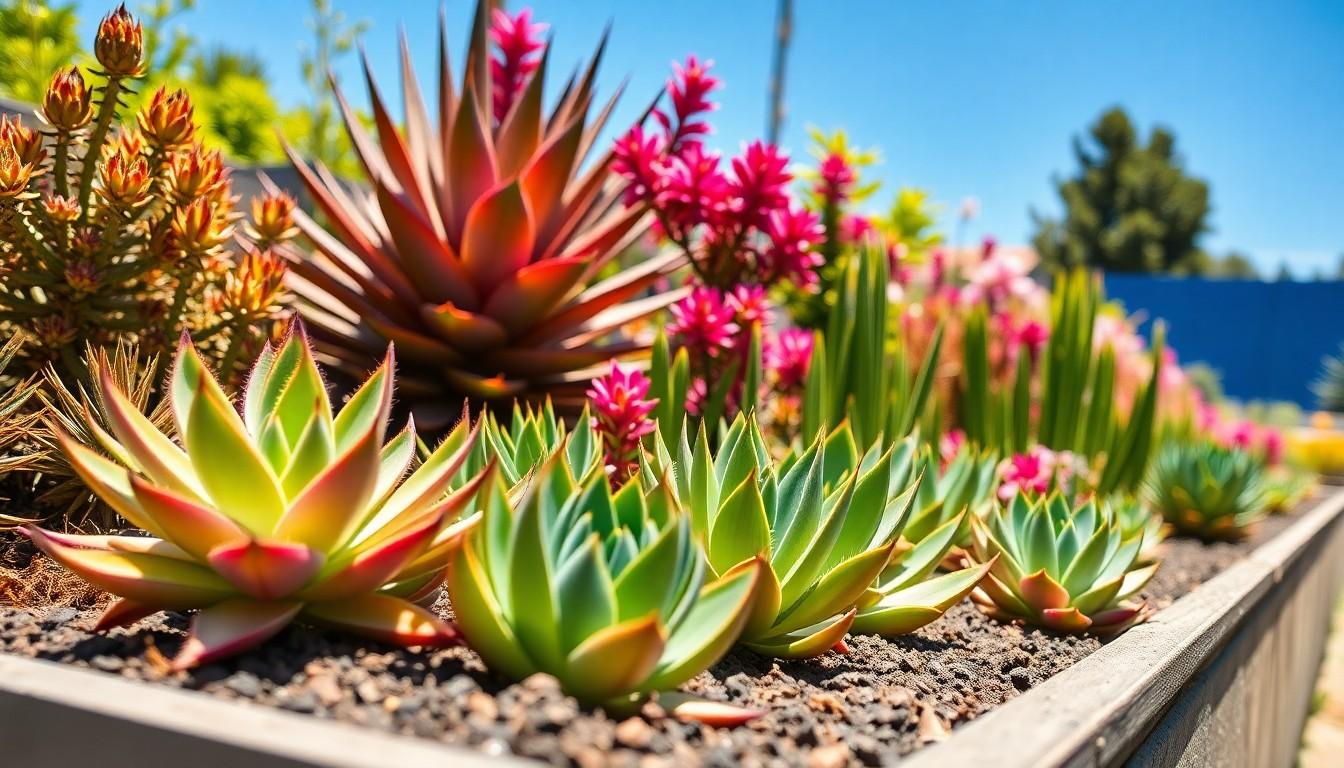The Best Fluffy Pancakes recipe you will fall in love with. Full of tips and tricks to help you make the best pancakes.

Can You Plant Succulents Outside? Discover the Best Tips for Outdoor Success
Succulents have taken the gardening world by storm, and it’s easy to see why. With their plump leaves and vibrant colors, they’re like the cool kids of the plant kingdom. But here’s the million-dollar question: can you plant these trendy green wonders outside? Spoiler alert—yes, you can! But before you toss them into the garden like confetti at a parade, there are a few things to consider.
Imagine your succulents basking in the sun, soaking up rays while showing off their unique shapes. Sounds dreamy, right? However, not all succulents are created equal when it comes to the great outdoors. Some thrive in the wild, while others prefer the cozy confines of your windowsill. Stick around as we dig into the dos and don’ts of planting succulents outside, ensuring your garden looks as fabulous as your Instagram feed.
Understanding Succulents
Succulents are popular choices for many gardeners due to their unique shapes and low maintenance needs. Outdoor planting requires knowledge about specific types to ensure their success.
What Are Succulents?
Succulents are plants that retain water in their leaves, stems, or roots. This adaptation allows them to thrive in arid environments. Thick, fleshy parts in these plants store moisture, making them drought-resistant. In addition, many succulents exhibit vibrant colors and diverse textures, contributing to their allure in gardens.
Common Types of Succulents
Several common types of succulents are suitable for outdoor cultivation. Agave is well-known for its striking rosettes and ability to tolerate heat. Sedum, often referred to as stonecrop, thrives in various conditions and produces attractive flowers. Echeveria features a wide range of colors and leaf shapes, enhancing garden aesthetics. Aloe vera, recognized for its medicinal properties, also grows well outdoors in suitable climates. Each type offers unique characteristics that can enhance landscaping designs.
Factors to Consider for Outdoor Planting

Understanding key factors is essential for successfully planting succulents outdoors. Each factor plays a significant role in the plants’ survival and growth.
Climate and Hardiness Zones
Climate directly impacts the success of outdoor succulent planting. Check the USDA Hardiness Zones to determine whether the local climate is suitable. Succulents generally thrive in warm, dry conditions. For instance, many popular varieties, like Agave and Echeveria, flourish in Zones 9 to 11. Gardeners situated in colder zones may struggle with frost-sensitive types. Transitioning to warmer areas offers greater success for these plants.
Sunlight Requirements
Sunlight exposure is crucial for succulents when planted outside. Most succulents thrive in bright, direct sunlight for several hours a day. Ideal conditions often include six or more hours of sunlight daily. Insufficient sunlight leads to etiolation, causing plants to stretch and weaken. Conversely, some varieties, such as Aloe vera, can tolerate partial shade. Assessing specific sunlight needs ensures plants receive appropriate care.
Soil and Drainage Needs
Soil composition significantly affects succulent health when outdoor planted. Well-draining soil prevents root rot and promotes growth. A mix of potting soil combined with sand or perlite works effectively. This combination enhances drainage while retaining sufficient moisture. Additionally, raised beds or pots encourage better drainage. Regularly check the soil moisture, keeping it on the drier side to suit succulent preferences.
How to Plant Succulents Outside
Planting succulents outside requires attention to detail to ensure their successful growth. Proper steps include choosing the right location and preparing the soil effectively.
Choosing the Right Location
Selecting an appropriate spot for succulents is crucial. Sunlight exposure is key; most succulents thrive with six or more hours of direct sunlight daily. Locations that receive adequate light promote vibrant colors and healthy growth. Wind protection is also important; placing succulents near a wall or fence can shield them from harsh elements. Additionally, consider drainage; avoiding low-lying areas where water accumulates prevents root rot. Observing the local climate helps determine the best placement, especially in USDA Hardiness Zones 9 to 11.
Preparing the Soil
Soil preparation plays a vital role in the health of outdoor succulents. A well-draining potting mix is essential; combining standard potting soil with sand or perlite enhances drainage. This mix allows excess water to flow freely, reducing the risk of root rot. Ensuring soil pH remains neutral supports overall plant health. Before planting, loosen the soil to improve aeration; compacted soil restricts root development. Creating raised beds or mounds can further improve drainage, especially in regions with heavy rainfall.
Care Tips for Outdoor Succulents
Caring for outdoor succulents involves specific techniques to ensure healthy growth and resilience. Attention to watering and pest management plays a crucial role in their success.
Watering Guidelines
Watering outdoor succulents requires a tailored approach. Once established, succulents prefer infrequent watering since their root systems store moisture. During the growing season, typically spring and summer, a deep soak every two to three weeks suffices, while fall and winter may only need monthly watering. Ensure the soil dries out completely between waterings to prevent root rot. Adjust watering frequency based on weather conditions; in extreme heat, more frequent watering might be necessary. Overhead watering can damage leaves, so it’s best to apply water directly to the soil level.
Pest Management
Managing pests effectively can secure outdoor succulents’ health. Regular inspections help identify the presence of common pests like mealybugs, aphids, and spider mites early. If pests occur, a gentle spray of water often dislodges them. For more persistent infestations, insecticidal soap or neem oil is effective and safe for many succulents. Encouraging beneficial insects like ladybugs can also assist in pest control. Maintaining proper airflow around the plants reduces disease risks, as crowded succulents can attract pests. Treating any pest issues promptly ensures a thriving outdoor succulent garden.
Conclusion
Planting succulents outside can be a rewarding endeavor for any gardener. With the right conditions and care, these resilient plants can thrive in outdoor settings. It’s essential to choose the appropriate varieties and ensure they receive adequate sunlight and well-draining soil.
By understanding their specific needs and adapting to local climate conditions, gardeners can create stunning outdoor displays that showcase the unique beauty of succulents. With proper attention to watering and pest management, outdoor succulents can flourish and enhance any landscape for years to come.
